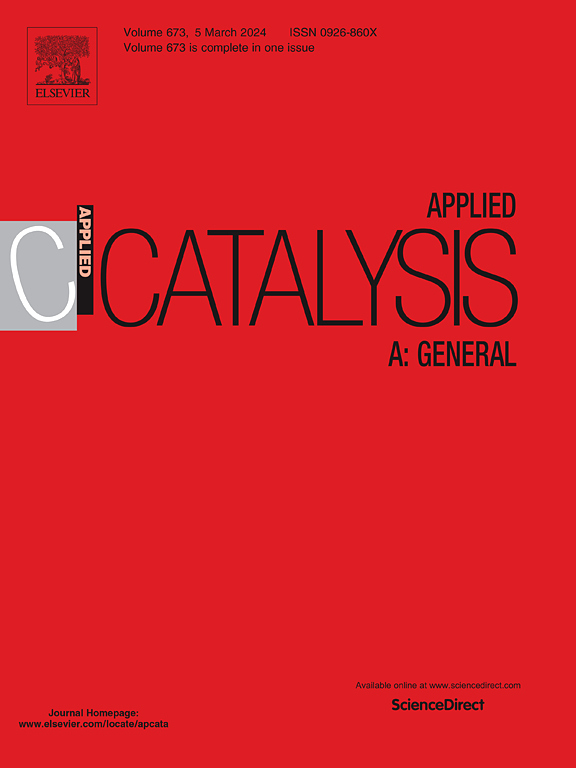Upgrading of PET to CHDM over base metal catalysts via tandem processes
IF 4.7
2区 化学
Q2 CHEMISTRY, PHYSICAL
引用次数: 0
Abstract
1,4-cyclohexanedimethanol (CHDM), which has similar structural units to PET (polyethylene terephthalate), is a crucial polyester monomer. Therefore, PET can be directly oriented to synthesize CHDM through tandem alcoholysis and selective hydrogenation. However, use of precious metal catalysts such as Pd or Ru catalyst limits the industrial application. Herein, we developed a new process that converts PET into CHDM in mixed solvent of CH3OH-1,4-dioxane via tandem three-step reactions without the involvement of precious metal catalysts or any separation or purification, including the methanolysis of PET to obtain dimethyl terephthalate (DMT) first, then DMT was hydrogenated over a NiLa-40wt% catalyst to form the intermediate dimethyl 1,4-cyclohexanedicarboxylate (DMCD), followed by the further hydrogenolysis of DMCD to CHDM over a Cu1Fe1Al0.5 catalyst to yield CHMD with an overall CHDM yield of .90.2 %. Importantly, the final product CHDM could be separated easily just by distillation because there is a significant difference in the boiling point of CHDM with the by-products.
求助全文
约1分钟内获得全文
求助全文
来源期刊

Applied Catalysis A: General
化学-环境科学
CiteScore
9.00
自引率
5.50%
发文量
415
审稿时长
24 days
期刊介绍:
Applied Catalysis A: General publishes original papers on all aspects of catalysis of basic and practical interest to chemical scientists in both industrial and academic fields, with an emphasis onnew understanding of catalysts and catalytic reactions, new catalytic materials, new techniques, and new processes, especially those that have potential practical implications.
Papers that report results of a thorough study or optimization of systems or processes that are well understood, widely studied, or minor variations of known ones are discouraged. Authors should include statements in a separate section "Justification for Publication" of how the manuscript fits the scope of the journal in the cover letter to the editors. Submissions without such justification will be rejected without review.
 求助内容:
求助内容: 应助结果提醒方式:
应助结果提醒方式:


